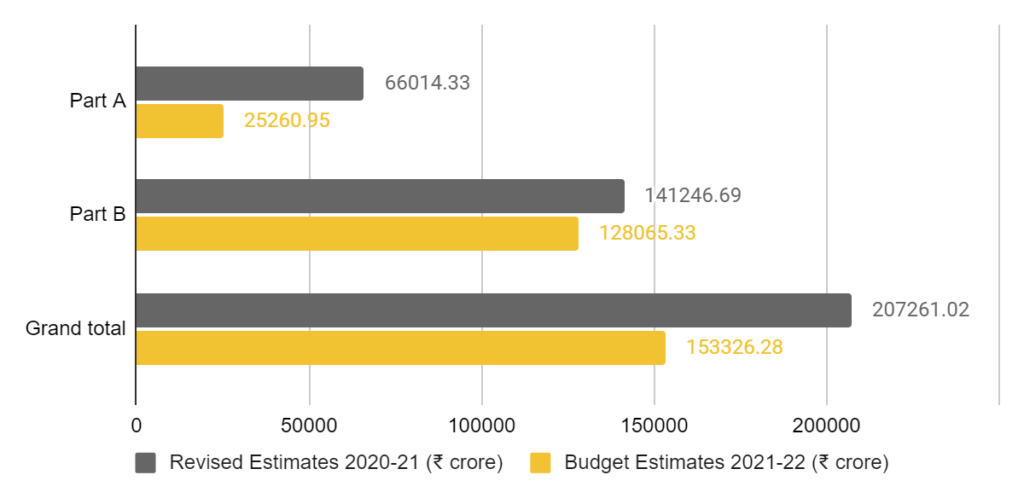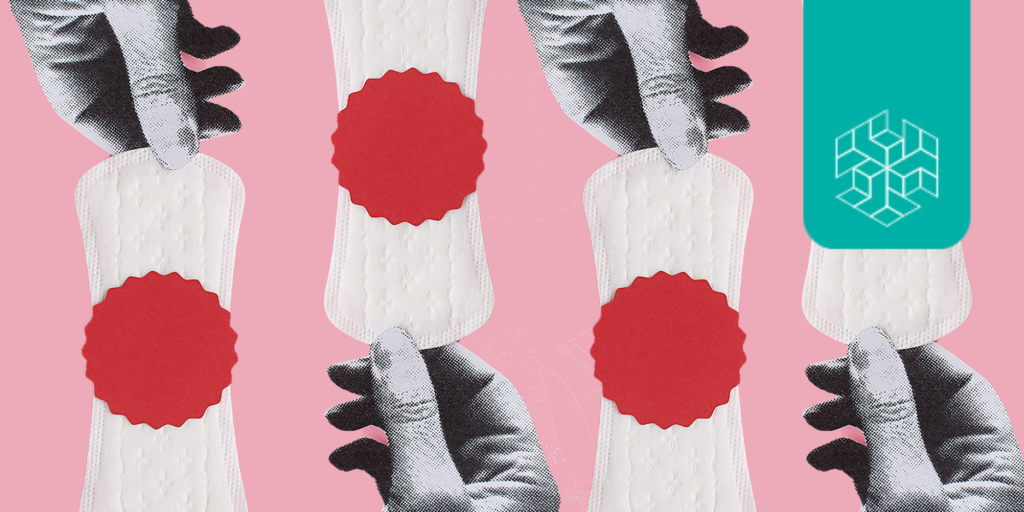Authored by – Akshita Sharma
Edited by – Kavita Majumdar and Priyamvada Chaudhary
Socio-economic, health, education, and other development indicators tell us that women — who comprise half the population — are among India’s most vulnerable demographics. Hence, it is not surprising that India ranks 112th out of 153 countries on the Gender Gap Index. A quick look at the Gender Budget (GB) 2021 will tell you that budgetary allocations that address women’s needs have fallen by 26%.
Both Part A and B of the budget have seen a decrease in allocations by 62% and 9.3%, respectively (Figure 1). Part A has 100% women-specific programmes, while Part B contains 30% women-specific programmes. In fact, the GB has fallen by 6.6% from last year as a proportion of Total Expenditure through the Union Budget (Figure 2).
Figure 1: Allocations to Part A and B of the Gender Budget

Source: Gender Budget
Figure 2: Total Gender Budget as a proportion of Total Expenditure through Union Budget (%)

Source: Expenditure Profile, Union Budget 2021-22
Since the COVID-19 pandemic has widened gender gaps, this contraction in GB will not help women. Without trivialising the pandemic’s devastating impact on all vulnerable and marginalised communities, it is crucial to note the disproportionate impact on women. Examining the GB through three particular lenses raises serious concerns. The lenses are the need for socio-economic empowerment and development of Indian women, pre-existent gender disparities, and additional setbacks driven by the COVID-crisis.
Looking at nutrition and health, the recent NFHS-5 data reflects that while overall indicators for women have improved, the incidence of anaemia has worsened — more than 50% of women [1] and children are anaemic in 13 of the 22 States/UTs. The blow dealt to family planning services by the pandemic is likely to, in the best-case scenario, lead to 1.94 million unintended pregnancies and 1.18 million abortions, more than half being unsafe abortions [2].
Against this backdrop, the merging of the Anganwadi services, National Nutrition Mission, National Creche Scheme, and Scheme for adolescent girls into ‘Saksham Anganwadi and Poshan 2.0’ raises questions about the allocations made to each scheme individually. In Figure 3 below, a distinct drop is seen when we compare the revised estimates (RE) 2020-21 for these schemes to budget estimates (BE) for the same year, indicating the pandemic’s adverse impact on how budget allocations have been utilised. More importantly, this year’s BE for ‘Saksham Anganwadi and Poshan 2.0’ (INR 13071.8 crores) has seen an 18.7% fall compared to last year’s budget allocations for all these schemes put together (INR 16077.52 crores). The Ministry of Women and Child Development allocations comprise only 0.7% of the total budget, a fall from last year’s 1%. Allocations for the Mid-Day Meal Scheme, a crucial child welfare scheme, has fallen by 11%.



